Who are the canine emblems of the Emerald Isle? Irish dogs, celebrated for their rich history and vibrant personalities, range from the sleek Irish Setter to the commanding Irish Wolfhound. Discover the fascinating variety of these breeds, what sets them apart, and how to best care for them, all within the context of their Irish heritage.
Key Takeaways
Irish dog breeds, such as the Irish Setter, Kerry Blue Terrier, and Glen of Imaal Terrier, are known for their distinctive coats, ranging from deep reds to unique blues, and are celebrated for their various skills in sports and hunting.
The majestic Irish Wolfhound is one of the world’s largest dog breeds, impressively recreated from extinct lines, while the intelligent Irish Water Spaniel excels in water activities and family involvement.
Proper care for Irish dog breeds includes regular grooming, tailored diets, and veterinary care with vaccines against common diseases, alongside training that emphasizes early start, positive reinforcement, and sufficient physical activity.
The Alluring Irish Setters
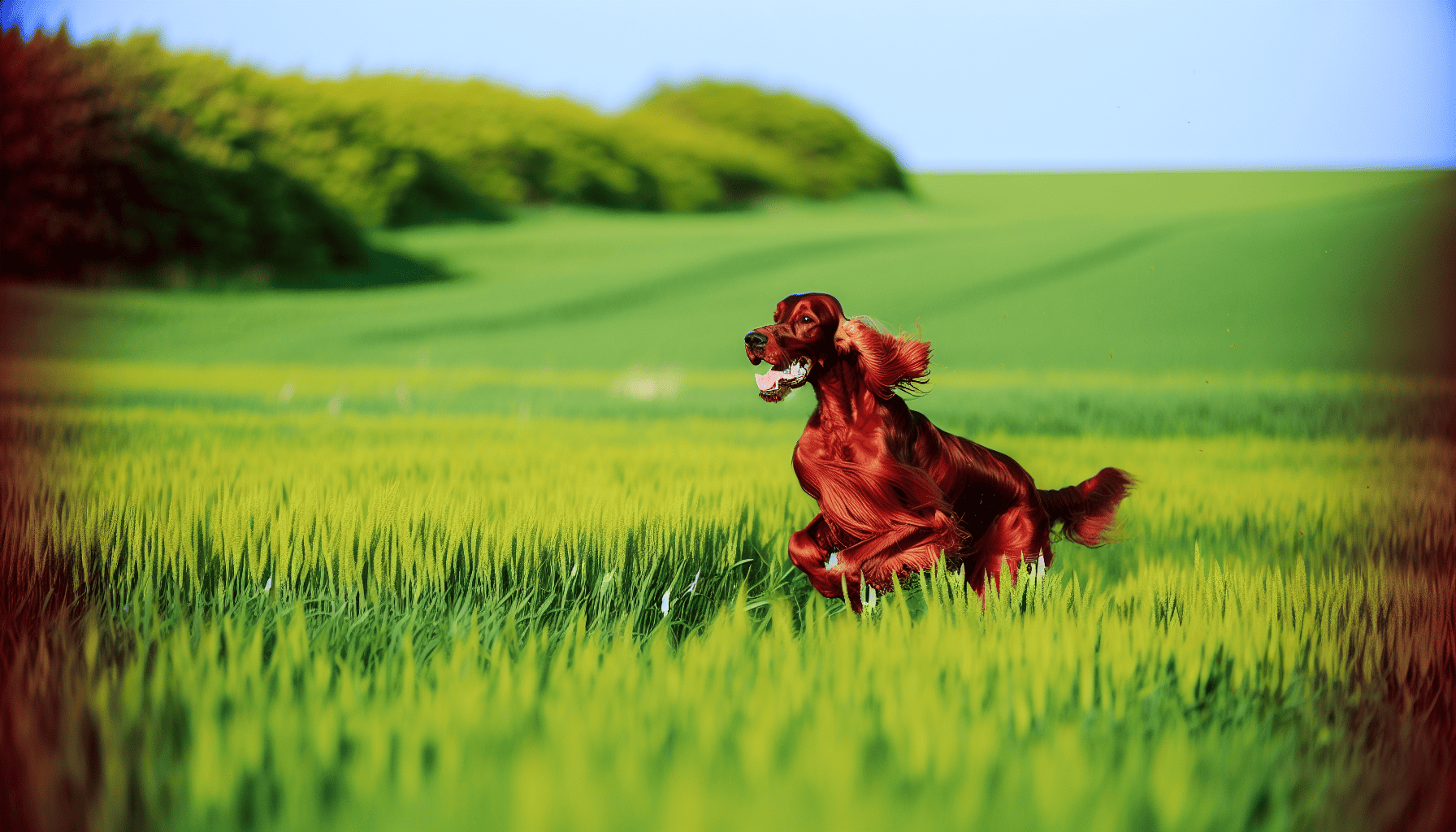
Originally from the lush landscapes of Ireland, the Irish Setter, also known as the Irish Red, made its way to America in the mid-1860s, bringing its blend of spaniel, setter, and pointer genes with it. This popular breed is known for its spirited temperament, loyalty, and stunning red coat, earning it admiration from the Irish Kennel Club to the American Kennel Club.
Its charm isn’t just skin-deep, though. Irish Setters are also making significant contributions in the world of Irish breeds by excelling in locating game birds and showcasing their impressive skills in competitive events.
Majestic Irish Wolfhounds
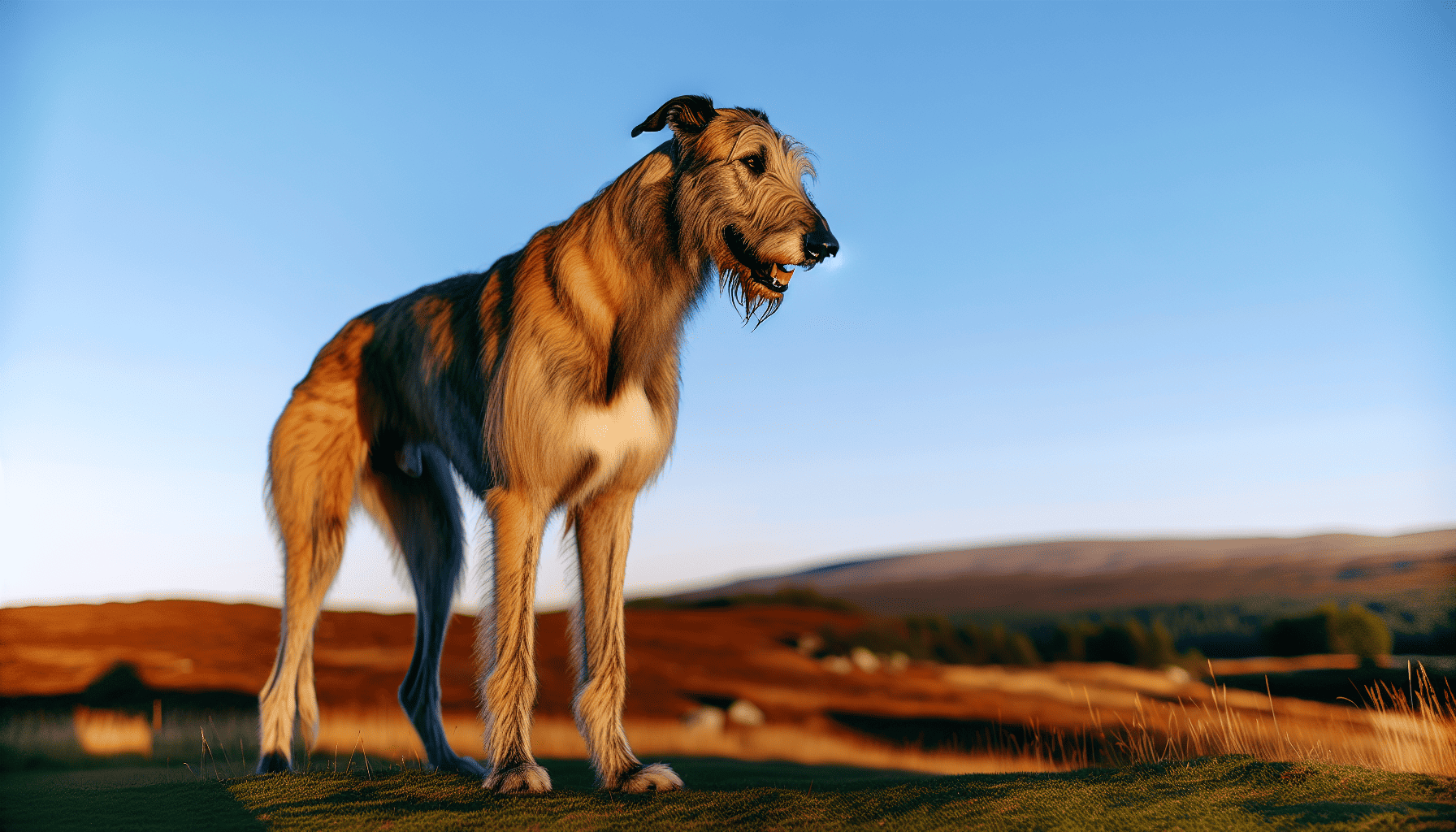
The Irish Wolfhound, one of the world’s largest dog breeds, is a sight to behold. Developed in the late 19th century by Captain George Augustus Graham, this breed was recognized in 1879 with the aim of recreating the now-extinct original Irish Wolfhounds. With a towering height and weight between 90-140 pounds, they are truly majestic animals, developed by breeding with Great Danes and Scottish Deerhounds for their impressive size.
The Versatile Kerry Blue Terrier
Next, we explore the Kerry Blue Terrier, believed to have originated from the Spanish Armada fleet and was bred initially to control vermin. Their coat is their trademark, a dense, wavy, and soft coat with a unique blue hue that undergoes a fascinating transformation from black to various shades of blue as they mature.
But their appeal doesn’t stop at their looks. Kerry Blue Terriers are known for their alertness, resourcefulness, muscular strength, and readiness for action and various dog sports.
Tenacious Irish Terriers
The Irish Terrier, an Irish dog breed, evolved in Ireland and is believed to have descended from the black and tan terrier-type dogs of Britain and Ireland. Beyond their rich heritage, Irish Terriers have a history of bravery, serving as messenger dogs in the trenches during the First World War. Standing about 18 inches at the shoulder, they are a prototype of long-legged terriers, with a tight red coat that matches their fiery temperament.
They are adaptable and loyal, making them a great companion, similar to the Mini Irish Doodle. This is true for both the Irish Doodle and the Irish Doodle Setter, as well as for Irish doodles in general.
Enigmatic Irish Water Spaniels
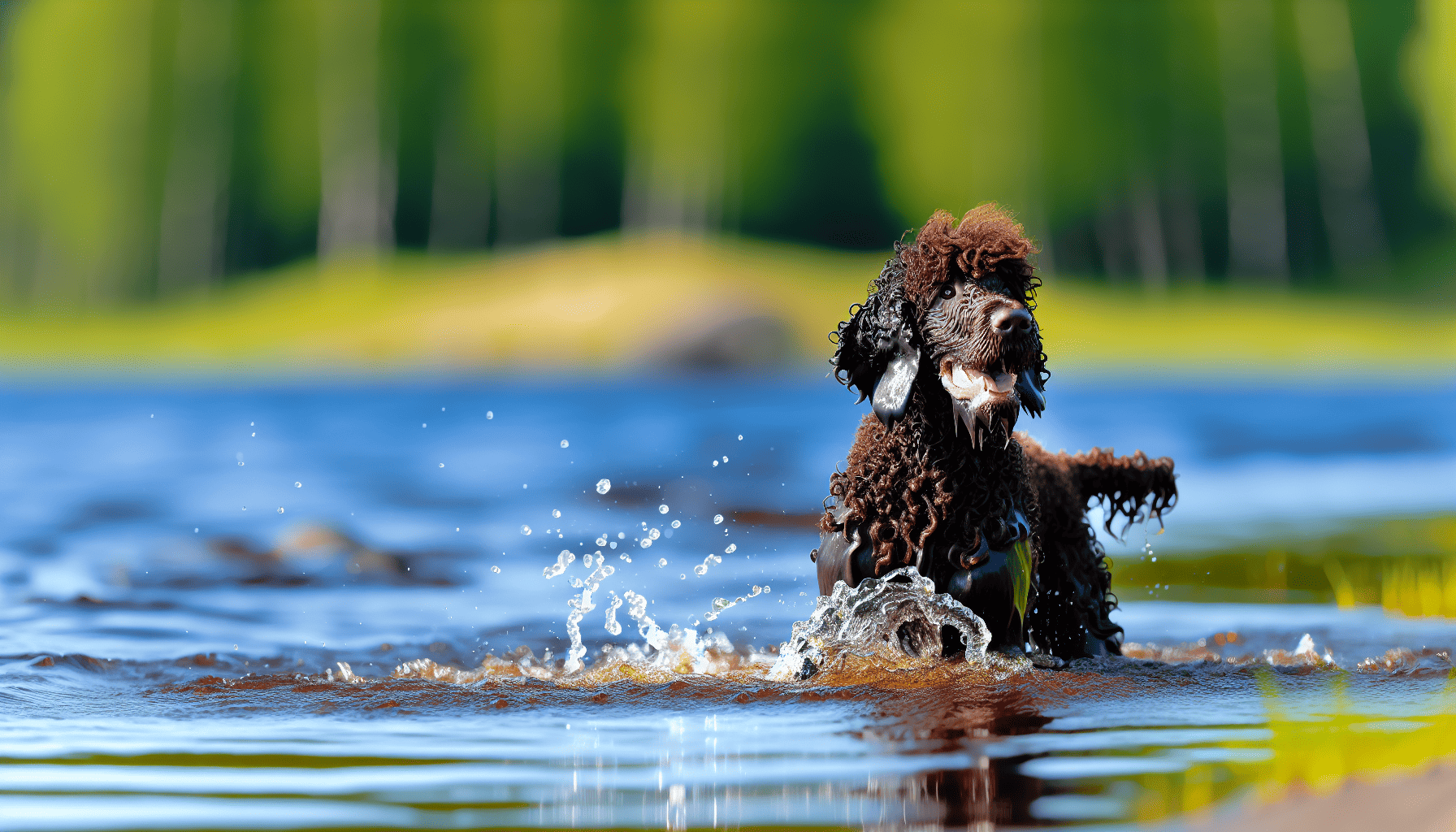
Switching focus to the Irish Water Spaniel:
This breed has alert and intelligent expressions
It has a small head
It has an athletic body with powerful shoulders and legs
Developed in Ireland in the 1830s
Gained popularity as a show dog during the Victorian era
Irish Water Spaniels are:
Incredibly independent
Open to strangers
Highly intelligent
Excel in various tasks, including hunting and retrieving
Thoroughly enjoy playing fetch in the water, going for walks, runs, swims, and being a part of family activities.
Soft Coated Wheaten Terriers: The Gentle Farm Dog
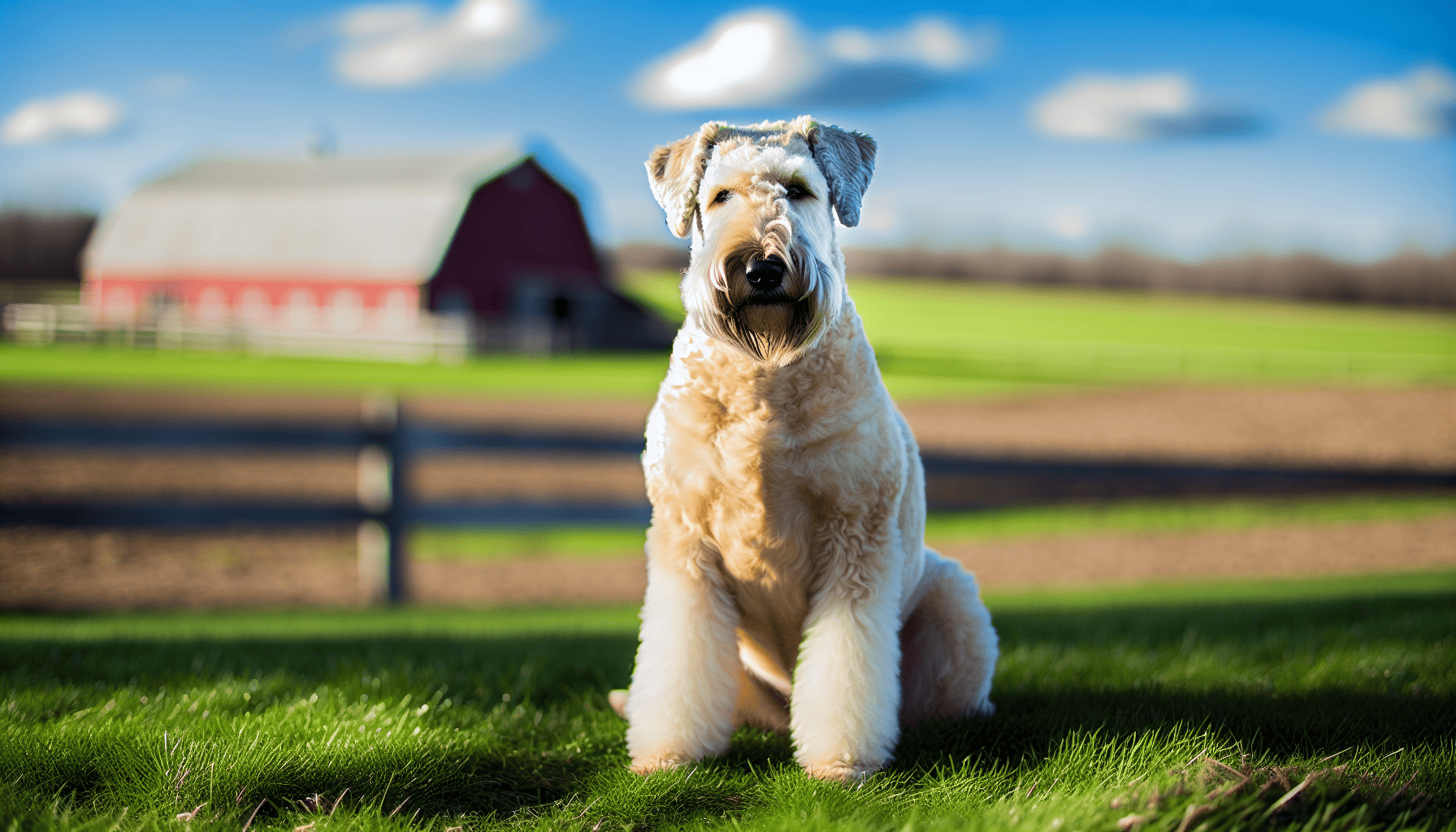
Introducing the Soft Coated Wheaten Terrier,, a breed with a rich history going back at least 200 years in Ireland. They require grooming every 4-6 weeks, whether they have a show coat or a shorter trim, and thrive on a diet high in protein, with just the right amount of fat and low carbohydrates.
Puppies usually enjoy about 1 1/2 to 2 cups of dry food, twice a day, to support their amazing growth.
Glen of Imaal Terriers: Small but Mighty
The Glen of Imaal Terrier, developed by skilled farmers in the 17th and 18th centuries in the Irish Glen of the eastern seaboard of Ireland, may have a connection to the Soft-Coated Wheaten Terrier. Known as a silent hunter, they were originally bred to hunt fox and badger, and were also employed as turnspit dogs.
Characteristics of the Glen of Imaal Terrier include:
Small yet muscular
Charming brown eyes
Adorable small folded ears
Impressively muscular hindquarters that showcase their strength and hunting prowess.
They possess intelligence, loyalty, patience, and have a sweet temperament towards their family. They live an average lifespan ranging from 10 to 15 years.
The Rare Kerry Beagle
The Kerry Beagle, dating back to the late eighteenth century in Ireland, is believed to be a descendant of the Old Southern Hounds. Here are some key characteristics of the Kerry Beagle:
Height: 22-24 inches
Weight: 50-60 lbs
Affectionate and gentle nature around kids and other pets
Average lifespan: 10-14 years
The Kerry Beagle has a great potential for a long and fulfilling life.
Caring for Your Irish Breed: Health and Training Tips
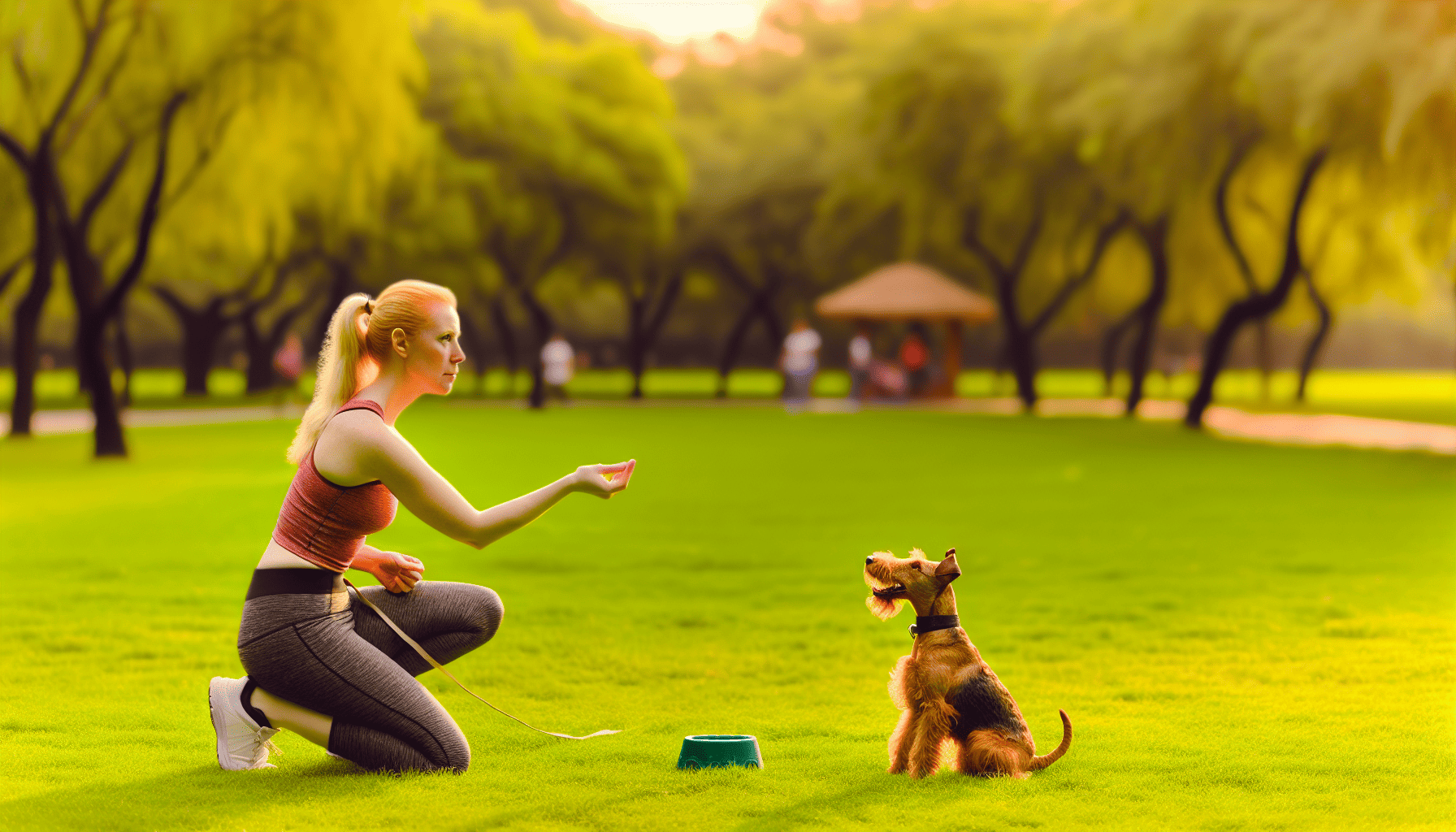
Ensuring the health and well-being of Irish dog breeds includes vaccination against diseases like distemper, parvovirus, hepatitis, leptospirosis, and kennel cough. Thriving on 30 minutes to 2 hours of moderate to high-intensity activity daily, they maintain optimal health.
Training techniques that yield the best results involve early commencement, positive reinforcement, high-value rewards, and lots of physical activity.
Summary
Irish dog breeds, with their rich histories and unique characteristics, are a testament to Ireland’s enchanting heritage. Each breed has its own charm, whether it’s the alluring Irish Setter, the majestic Irish Wolfhound, or the small but mighty Glen of Imaal Terrier. Caring for these breeds may require a little extra effort, but the rewards are worth every bit of it.
Frequently Asked Questions
What is Ireland’s national dog?
The national dog of Ireland is the Kerry Blue Terrier, originally bred for controlling vermin and as a general working dog. Despite its mysterious origins, the breed has been known in Ireland for at least 150 years.
What is a small Irish Wolfhound called?
A small Irish Wolfhound is called a Miniature Irish Wolf Schnauzer, which combines the noble qualities of the Irish Wolfhound with the affectionate nature of the Mini Schnauzer. It is outgoing and loves company.
What is the oldest breed of Irish dog?
The oldest breed of Irish dog is the Irish Collie, which has been suggested to be the oldest breed in Ireland. The Irish Wolfhound also dates back at least as far as the fifth century.
Did Irish Wolfhounds go extinct?
Irish Wolfhounds did not go extinct, but by the late 1800s they faced a decline due to various factors including selective breeding to revive the breed.
What breed of dogs come from Ireland?
The breeds of dogs that come from Ireland include the Irish Water Spaniel, Irish Setter, Irish Terrier, Irish Wolfhound, Border Collie, and Cocker Spaniel. They are known for their distinct characteristics and history in Irish culture.

